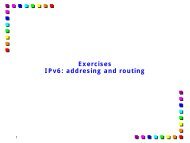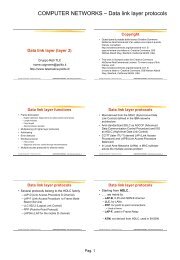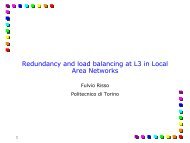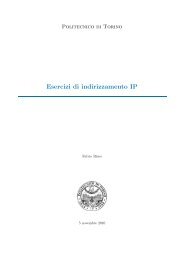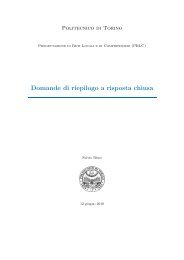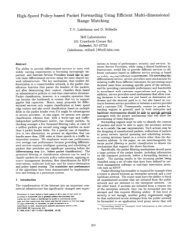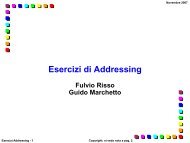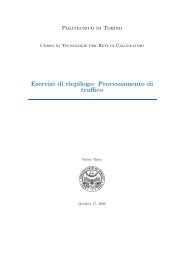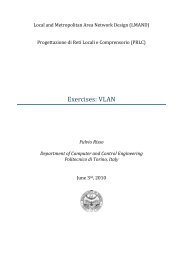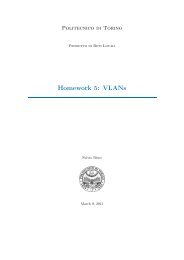Esercizi di Routing - the Netgroup at Politecnico di Torino
Esercizi di Routing - the Netgroup at Politecnico di Torino
Esercizi di Routing - the Netgroup at Politecnico di Torino
You also want an ePaper? Increase the reach of your titles
YUMPU automatically turns print PDFs into web optimized ePapers that Google loves.
Novembre 2005 2007<br />
<strong>Esercizi</strong>o 8<br />
• Soluzione<br />
• Le reti C e D sono raggiunte da R1 con route <strong>di</strong>rette,<br />
quin<strong>di</strong> non influenzano l’aggregabilità su tale router.<br />
Vengono quin<strong>di</strong> per ora trascur<strong>at</strong>e nel computo totale<br />
<strong>di</strong> in<strong>di</strong>rizzi necessari per le due aree definite.<br />
Si ottiene quin<strong>di</strong>:<br />
• Area 1: 27 (+3) + 120 (+3) = 153 in<strong>di</strong>rizzi<br />
• Area 2: 60 (+3) = 63 in<strong>di</strong>rizzi<br />
• Si scelgono quin<strong>di</strong> i seguenti address range:<br />
• Area 1: 130.192.0.0/24<br />
• Area 2: 130.192.1.0/26<br />
• Le reti C e D vengono inglob<strong>at</strong>e nell’Area 1, che può<br />
contenere altre due reti /30.<br />
Attenzione: L’Area 2 non le può contenere!<br />
AddressingIP <strong>Esercizi</strong> <strong>Routing</strong> - 1 - 18 Copyright: si veda nota a pag. 2



